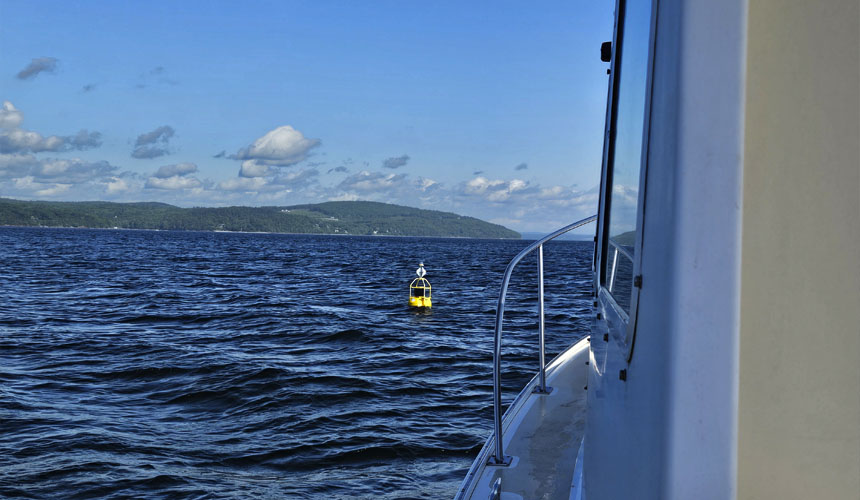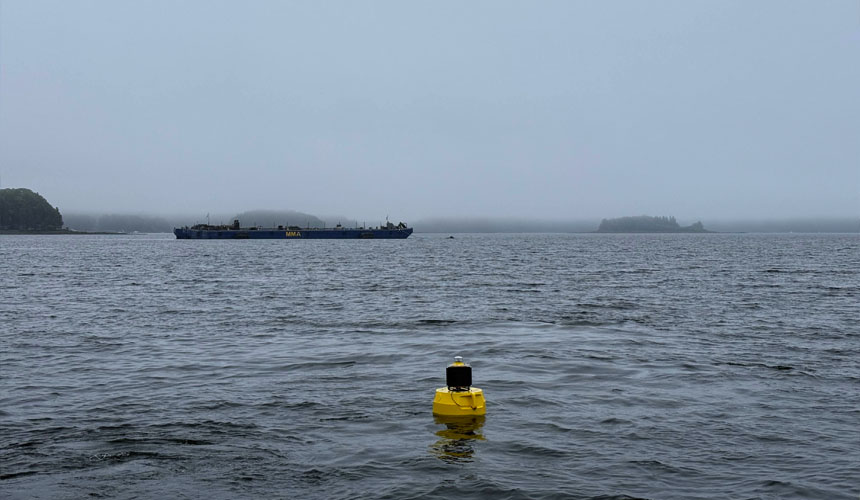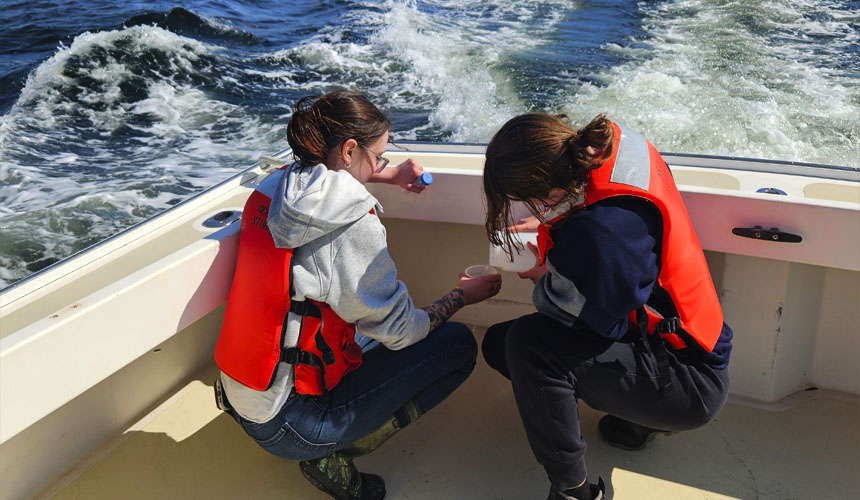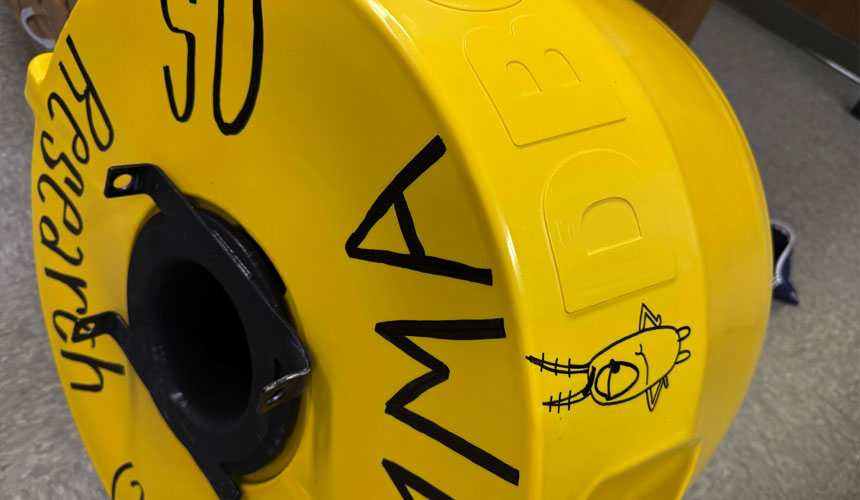In the Spring of 2025, Maine Maritime Academy Ocean Studies (MMA OS) students and faculty launched a new project to monitor plankton, the base of the marine food web, in Penobscot Bay (PenBay). The project involves collaborators in science and education at the Hurricane Island Center for Science and Leadership. The team’s work is funded by the Maine Coastal and Marine Climate Fund which supports projects that advance Maine’s Climate Action Plan in marine systems and coastal communities. The project seeks to develop a baseline understanding of plankton diversity in PenBay. This work will deepen our understanding of microscopic marine organisms that play a crucial role in ocean health, sustainable aquaculture, and how ecosystems respond to climate change.
Over the next two years, plankton monitoring will align with two ocean monitoring buoys deployed by collaborators at the Hurricane Island Center for Science and Leadership off of Hurricane Island and Islesboro. An additional monitoring station in Smith Cove has been established by MMA to support this collaborative research. Plankton will be analyzed using an instrument known as the FlowCam8000 that MMA Ocean Studies owns and operates with the purpose of research, education, and community science. Plankton samples are collected weekly at these three sites between May and October, and monthly from November to April. Samples are preserved, stored, and analyzed each summer by MMA student research technicians.
As part of this funded project, MMA students will serve as technicians, spending the summer collecting plankton, becoming FlowCam experts, analyzing the data, and sharing their knowledge with Hurricane Island educational programs.
This website is dedicated to sharing the plankton data and PenBay Buoy data with the general public and stakeholders. Plankton data, including species, classes, and their biovolume and abundances, are shared below as a master spreadsheet. Buoy data, including temperature (all buoys), salinity (all buoys), oxygen (all buoys), chlorophyll a fluorescence (Islesboro and Hurricane), and turbidity (Smith Cove) can be accessed via the hydrosphere sites linked in the interactive map below.
Plankton Data
Sampling and Buoy Map
Buoy Data
Methods
Plankton samples are collected using the field protocol available here.
For details on the FlowCam8000 analysis, please contact the lead PI (contact information below).
Contact
For more information, or questions about the project, or if you are planning to use the data for publication or presentation, please contact the lead PI, Dr. Kerry Whittaker at email: kerry.whittaker@mma.edu.













All Rights Reserved © 2026 • Web issue?
Non-Discrimination Notice • Privacy Policy & GDPR